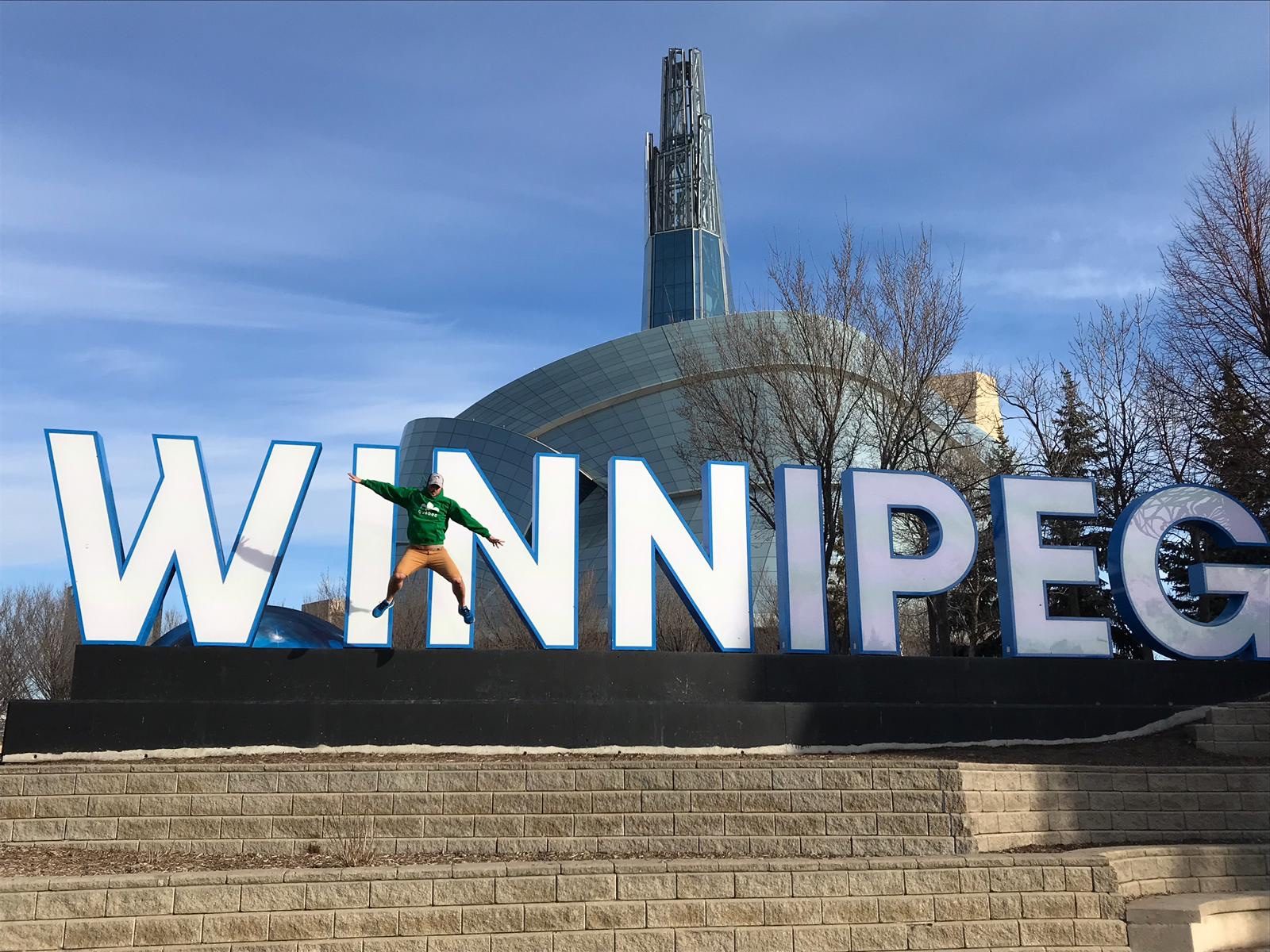This great Canadian railway odyssey has thrown up many delightful charms and none more so than the City of Winnipeg. There is more to come.
Situated in the heart of Canada, you can begin to see why it’s such a strategic location. It’s remarkable to think I never really knew of its existence! It’s perhaps the combination of the lack of expectation and knowledge that give these delightful discoveries such unbridled joy.
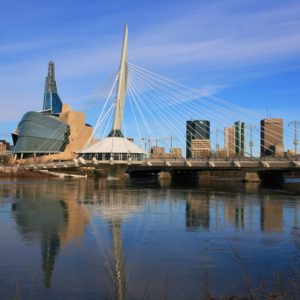
Blessed in glorious spring sunshine but with rumours of -2°C outside the train, I disembarked and went off in search of new found discoveries. My time was limited as after all we were on a railway adventure. A quick dash soon led me to the river. The river provides the backdrop for most of the history associated with the city. In fact there is a confluence of two rivers (Red and Assiniboine) which is referred to locally as ‘The Forks’. It was here that I was able to capture the skyline of the city and found some prose about freedom based on gulls seen as a youngster with her mother at Provencher Bridge in a work entitled Street of Riches by Gabrielle Roy.
“Toward the middle of the Provencher Bridge,
Maman and I found ourselves surrounded by sea gulls;
they flew low over the Red River.
Maman took my hand and clasped it tight,
as though to convey to me a movement of her soul.
A hundred times a day Maman got a lift of joy from the world around us;
sometimes it was nothing more than the wind or the flight of a bird that delighted her.
Leaning on the parapet we watched the gulls for a long while.
And all of a sudden, on that bridge, Maman told me that she would like to be able to go whenever and wherever she might choose.”
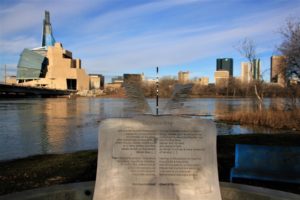
Over on the other side I was immediately drawn to a graveyard housing a good number of grave stones and which led you along a path to a ruined church/cathedral! I was fascinated to see these ruins, the result of a fire that destroyed the building in the 1970s. A more modern church has been built behind the ruins which have remained as part of the architect’s new vision of the church, a phoenix from the ashes if you like.
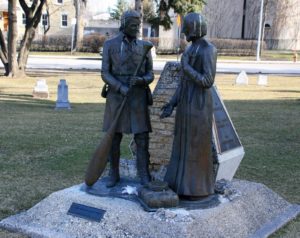
To the right of this is a charming house, which is now a museum. Sat in front of it is a statue to Louis Riel. Louis led the Red Rebellion for the local provisional government against the growing number of newcomers from Eastern Canada. Garnet Wolseley was sent to crush the rebellion – there was no evidence of him here!! This rebellion resulted in Manitoba then becoming the fifth province of Canada.
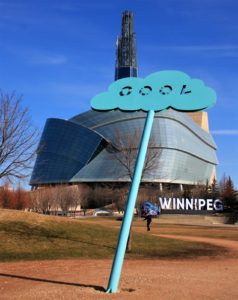
As time was short, a quick dash along the river and back to the station was made. Around the concert area which led back to the train station there were some old Canadian Pacific carriages resting in the car park. Other parts of the city’s history which are relevant is Bloody Saturday (100th anniversary this year). After the First World War, the city had many men return form the war and looking for work. It was felt that opportunities had been taken by immigrants and this, coupled with a feeling that there had been profiteering from the war by many companies without passing on some of the benefits to the workforce leading to low wages led to the strike of 1919. This ended in tragedy when two people with non-Canadian sounding names were killed by the mounted Canadian police. So this beautiful stop provided some memorable moments and some information for my further interest. It shall be that inquisitive nature that shall lead me to explore this place further upon coming back – apparently the market is a must!!
Winnipeg, Manitoba, Canada

